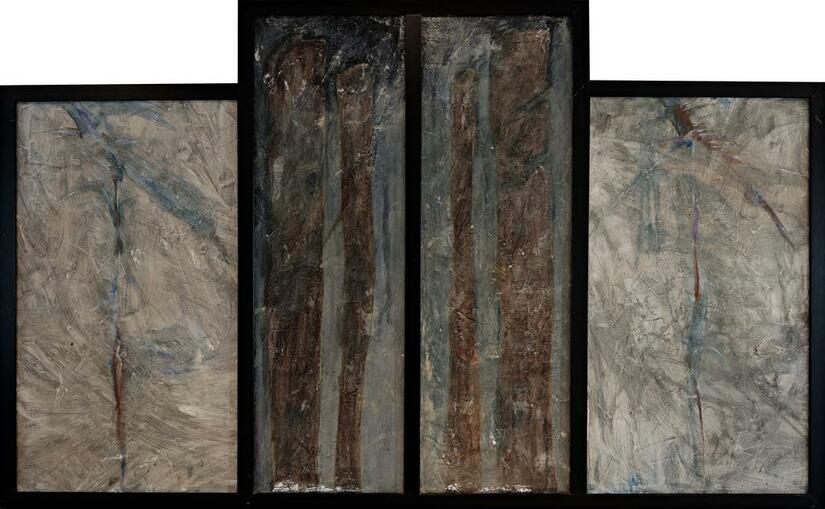GLIAUGIR: Hara – Altar zur Mitte, 1989 (Altar to the Center)

Mixed media on cardboard, 205 x 124/104 cm
GLIAUGIR writes about it:
"To be truthful. Rest in yourself.
To be grounded. To remain in its center.
All facets of your soul are with you.
Concentrate your self-confidence.
Be balanced."
The term Hara comes from the Japanese and describes both the abdominal area and the energy field of the body. But it encompasses much more: where a European points to his head or heart to locate the seat of his soul and the driving force of his motives or feelings, a Japanese points to his stomach. Behind Hara there is a philosophy that can be implemented through a unity of mind and body and through a certain technique. Hara is not only theory, but in Japan it is also a practical part of people's everyday life through physical or mental exercises.
Volker Schmidt-GLIAUGIR (*1954 in Saarbrücken, Germany) lives and works in Saarbrücken. The versatile graduate designer paints, draws, illustrates, conceives performances, gives concerts, organises ART events, exhibits internationally and is a lecturer at various creative workshops. He has been working with the Europäische Akademie Otzenhausen for a long time in various constellations. For example, he acted as artistic consultant for the project Cerda & Celtoi and designed the book and flyer for the project. GLIAUGIR is the most frequently represented artist here with over 40 works (after Alfred Fuchs) and has exhibited several times at the academy: 1978 (together with Tom Gundelwein and Claus C. Krisch), 1990, 2005 ("Antikquarius") and 2015 ("Bitu Matos"). Even though he was at times particularly committed to Celtic culture, his name is borrowed from Germanic mythology: "Gliaugir, the one with the gleam in his eyes, or the one with the sharp look".